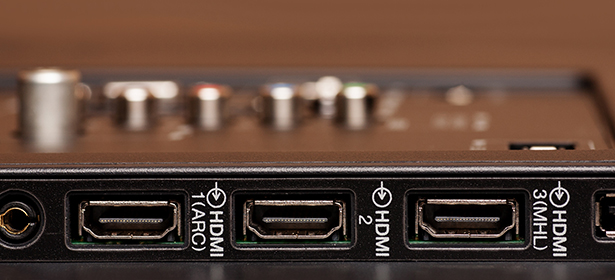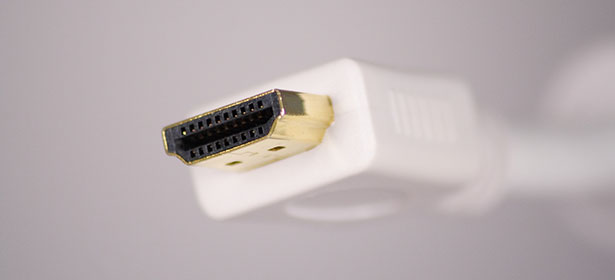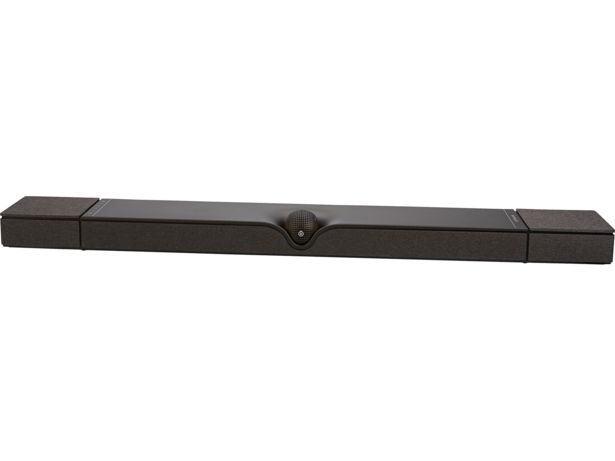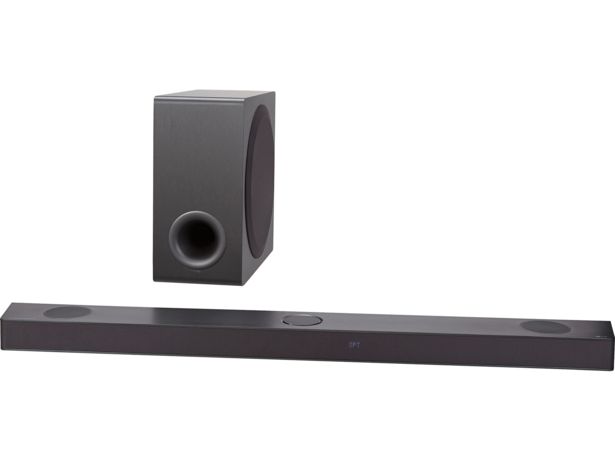How to set up a soundbar with your TV

Like any other speaker system, soundbars benefit from a bit of extra time and care when you first set them up. Use our easy-to-follow guide to find out how you can get the best-quality audio from yours.
Follow our six easy steps to set yours up. We also explain what the different connections mean so you can choose the best for your setup, and take you through what updates you need to make to your TV.
Soundbars aren't just for use with TVs, though – you can also use one to listen to music from your phone, tablet or laptop. We'll show you how.
Here, we'll help you to set up your soundbar, but you'll also want to make sure your TV is looking its best. Use our free tool to see your TV's ideal picture setting – go to how to get the best TV picture.
If you have any issues with your soundbar, see our expert guide to common soundbar problems.
How to set up your soundbar
If possible, place your soundbar directly in front of your TV and watch head on for the best results.
Place both on a flat surface, such as your TV stand if there’s room. To save space, you can fix the soundbar to the wall, but you'll need a separate bracket.
1. Subwoofer
If your soundbar has an external subwoofer, it might need a cable connection. Others are wireless and can be placed elsewhere, but generally it should be within 10 metres of the soundbar.
Make sure it’s not too close up against a wall, as this will result in boomy bass. You can put it inside your TV cabinet as long as it doesn’t cause distracting vibrations.
2. Keep it centred
Ideally, your soundbar should have equal space to its left and right edges, so sound disperses evenly around the room.
This helps the sound reflect more evenly towards your TV viewing position for a more balanced and immersive experience.
3. Soundbar height
Aim to place it within a foot of the height of your ears when you’re sitting in your normal TV viewing position. Soundbars tend to sound better when they’re wall mounted because of this.
4. Distance to soundbar
The ideal distance between you and the soundbar will vary depending on how powerful it is and whether it has any surround-sound features. Check the manual to see what the manufacturer recommends.
5. The sweet spot
A good soundbar will sound great wherever you’re sitting. However, some have a fairly narrow ‘sweet spot’. Outside of this, audio quality deteriorates, so try to set up your room so all TV viewers get the best audio quality possible.
Dolby Atmos uses upwards-firing speakers to bounce sound off the ceiling, to put you in the middle of the action. If your soundbar supports it, follow the instruction menu so you can get it set up for your specific room shape and size.
6. Furnishings
Ideally, you’ll have walls to the left and the right of the soundbar to reflect the sounds to your ears.
Soft furnishings elsewhere, such as carpets and curtains, will help to improve sound quality.
Don’t be tempted to hide your soundbar in your TV cabinet – your new speaker will sound boxed in and you won’t get the most from it.
On the hunt for a soundbar that can take pride of place in your living room? Discover the best soundbars that combine style with substance.
The best way to connect a soundbar
You can set up your room to perfection and still fall down at the most important hurdle: picking the right connection. We explore your main options to help you find the best for your setup.
Analogue input
It’s rare to see these once-familiar red and white cables as a primary input for soundbars these days. Analogue cables are simple to set up by plugging the coloured plugs into the matching port.
Many new soundbars aren’t compatible with this cable type – and we’ve seen some newer TVs without it, too. If you're still limited to analogue connections, it might be time for an upgrade. See our best TVs to find a model that's right for you.
Digital input
Practically every soundbar comes with one form of digital input, be it digital coaxial or digital optical. TVs usually have one or both of these outputs, so you’ll be able to hook yours up to your soundbar without any issue.
These cables can carry high-quality stereo signals, but aren’t best suited for surround sound.
HDMI
HDMI input/output ports are an increasingly common way to hook up your soundbar to your TV. Most new soundbars have HDMI ports, but it’s worth double-checking before you buy.
HDMI cables can carry more data than optical ones, opening up the possibility for higher-quality sound formats including Dolby Atmos and DTS:X surround sound.
HDMI CEC
Most HDMI sockets support some sort of consumer electronics control (CEC) feature. This allows you to control other bits of CEC-enabled equipment, such as the volume and power of your TV, using just one remote.
Many manufacturers imply that their TVs will only link with AV equipment from the same brand, but basic CEC functionality usually works between brands – just make sure HDMI CEC is enabled.
HDMI ARC
This handy feature allows you to link HDMI-compatible devices together. For example, you can connect your Blu-ray player or console to the soundbar, so only one cable needs to connect to your TV, working as both input and output.
This feature won’t work through every HDMI port – most newer TVs have a clearly marked ARC or eARC socket.

If your TV or soundbar doesn’t have HDMI ARC (you’ll need it on both to use it), the next best option is one of the other digital connections, most commonly digital optical or digital coaxial.
Check which one your TV has (it might have both) and choose a soundbar that matches it. You can use the filters on our soundbar reviews to find models with the connections you want.
Tech tips you can trust - get our free Tech newsletter for advice, news, deals and stuff the manuals don’t tell you
Setting up a TV with your soundbar
1. Set your sound output
Navigate to the TV menu and choose to output sound to an external speaker system. If you don't do this, your sound will continue to come out of the TV's speakers, or you’ll have no sound at all.

2. Check your HDMI connection
If you're using an HDMI connection, the soundbar might be listed using the manufacturer’s HDMI name. Look for:
- LG Simplink
- Panasonic Viera Link
- Philips EasyLink
- Samsung Anynet+
- Sony Bravia Sync
3. Ensure CEC mode is enabled
This will allow you to use your TV remote to adjust the volume coming from the soundbar.
4. Adjust the sound
You might need to change the delay and volume levels, as every room has its own shape, layout and furniture, and these all affect the sound.
5. Adjust the subwoofer level
This is so it integrates well with the soundbar and doesn’t dominate. In our tests, we often find that the subwoofer level is set quite high by default, so we then reduce it accordingly.
6. Experiment with soundbar settings
Some include a mode to improve speech clarity and many have a mode to process the surround sound (Dolby Digital and DTS audio) found on DVD/Blu-ray soundtracks and films broadcast on TV.
7. Experiment with sound effects
Designed to enhance films or music, such as ‘cinema’ or ‘3D’ for a film, this is when the audio is electronically processed to create a virtual surround-sound effect.
Look for a setting called ‘Stereo’, ‘Bypass’, ‘Off’, ‘Standard’ or ‘Natural’.
Still having problems with your set-up? See our expert guide to common soundbar problems.
Setting up a soundbar app
Soundbars often have smart features, which allow you to control some settings with your smartphone or tablet. This is especially likely in mid-range and premium soundbars. Different brands and models have different levels of functionality.
For some, it’s a nice-to-have additional feature. For others it’s a mixed blessing, with some settings and functions only available when you use the app. That might be fine now, but it means you could lose those functions (which can be as important as being able to balance the audio to suit your room) when the app is no longer supported by the manufacturer.
If you’re looking to futureproof your soundbar, it’s well worth checking that all features are accessible through a good old-fashioned remote control.
Soundbar apps are generally easy to set up and use, but it can mean an extra step in the setup process, such as entering your email address and configuring permissions. If you’d rather have a soundbar that you can plug in and use right away, you might be better off with a model without smart features.
If your soundbar is showing its age, find out more about the features available on the latest models – go to the best soundbars.
Soundbar voice controls
This feature allows you to control soundbar functions, such as turning on/off and adjusting volume, by speaking a command out loud – handy if you’re prone to losing the remote.
Some models have these features built in, so you won’t need to connect them to any kind of hub device. For others, you’ll need additional hardware, such as an Amazon Echo, Apple HomePod or Google Nest device.
The setup process varies between models, but it usually involves connecting to your soundbar using an app. After this initial setup, you should be good to go.
If you’re looking for a compatible hub for voice commands, check our guide on the best smart speakers.
Playing music through your soundbar
If you want to play audio from portable devices such as a laptop, smartphone or tablet, check whether the soundbar has 3.5mm or Bluetooth connectivity.
Bluetooth
Most recent soundbars can connect wirelessly using Bluetooth. This allows you to play music through your phone or laptop, for instance. This is usually done through your device’s settings menu under 'Bluetooth'.
You’ll need to keep the device relatively close to your soundbar. Staying within the same house or flat is usually fine, but obstacles or thick walls can cause interference.
Headphone port
Many soundbars have a 3.5mm mini-jack input, commonly referred to as a headphone port. This cable provides the lowest sound quality, and is prone to interference, so we don’t recommend it for TV audio.
It could be useful for playing music from a portable audio device such as a smartphone, but you're probably better off just using a Bluetooth connection. Headphone jacks are notably absent from many modern smartphones – iPhones haven't had them since 2016, and Samsung's flagship models ditched the port in 2020.
Multi-room
Many soundbars now come with wi-fi connectivity that allows them to form part of a multi-room music system. Generally speaking, these only work with other speakers of the same brand.
If you have a Sonos multi-room speaker system already, buying a Sonos soundbar might make more sense, for example. See our reviews of the best multi-room speakers for more information on the best brands.



